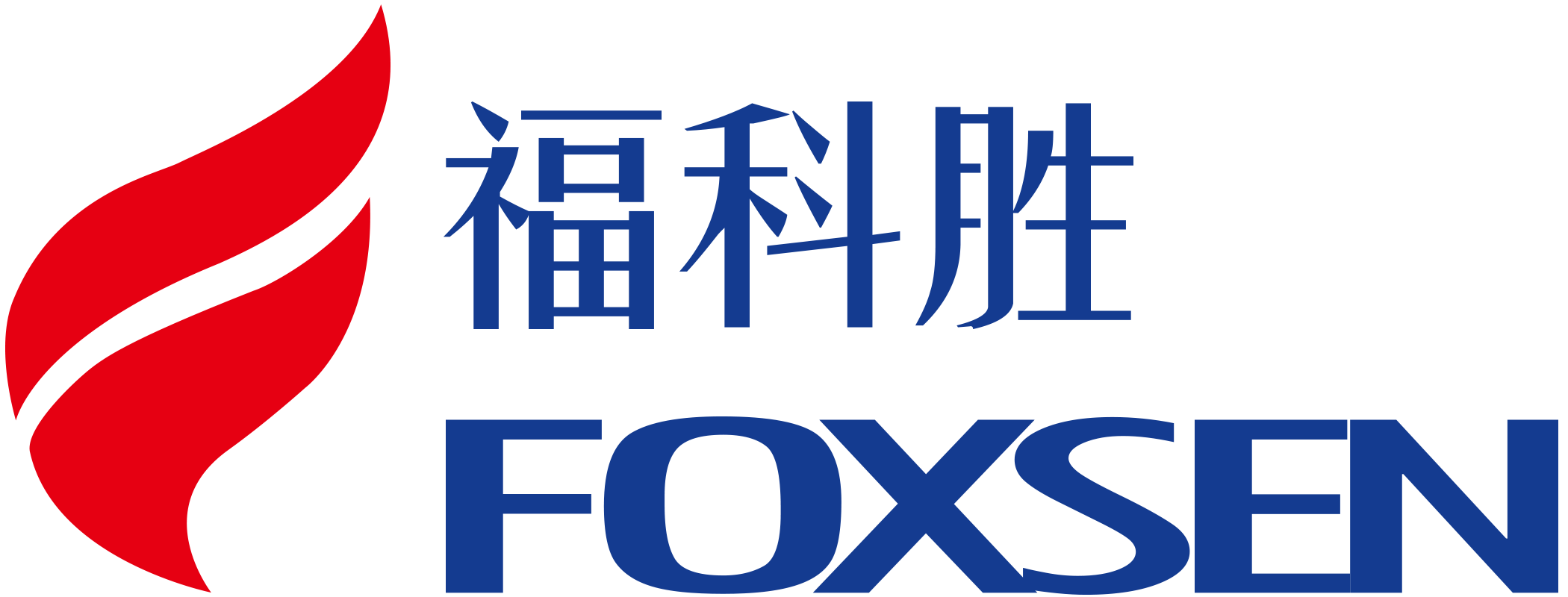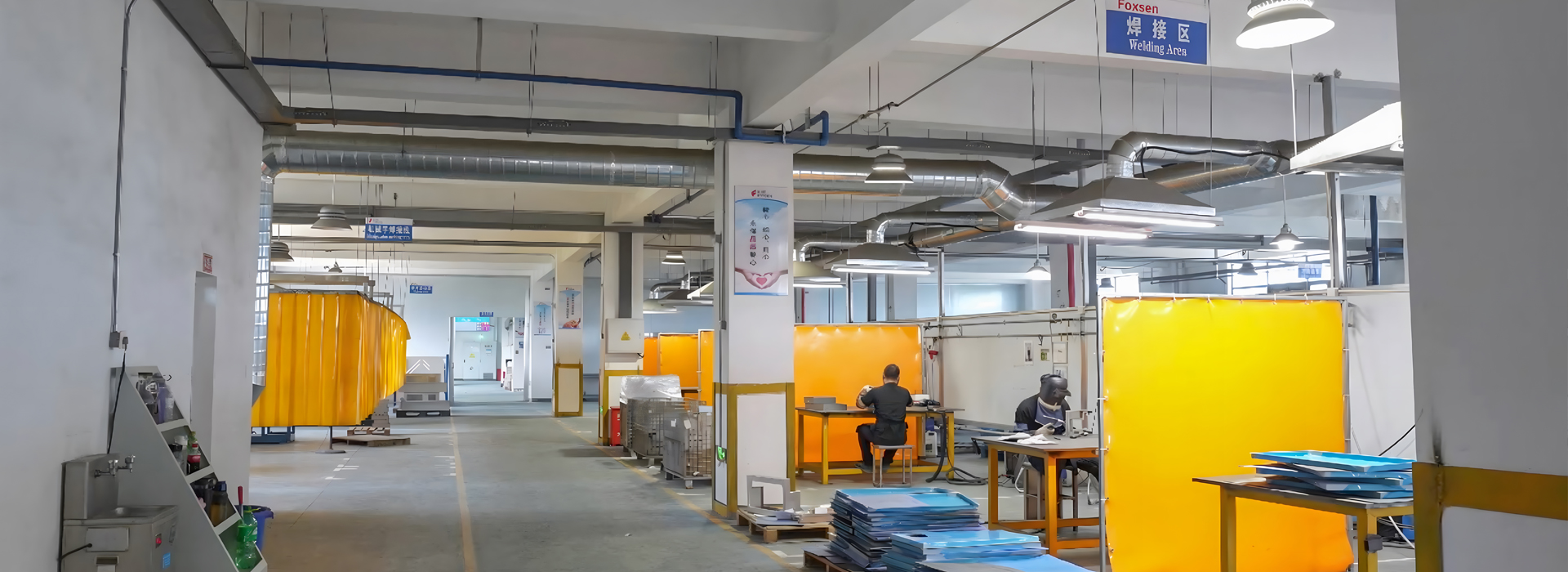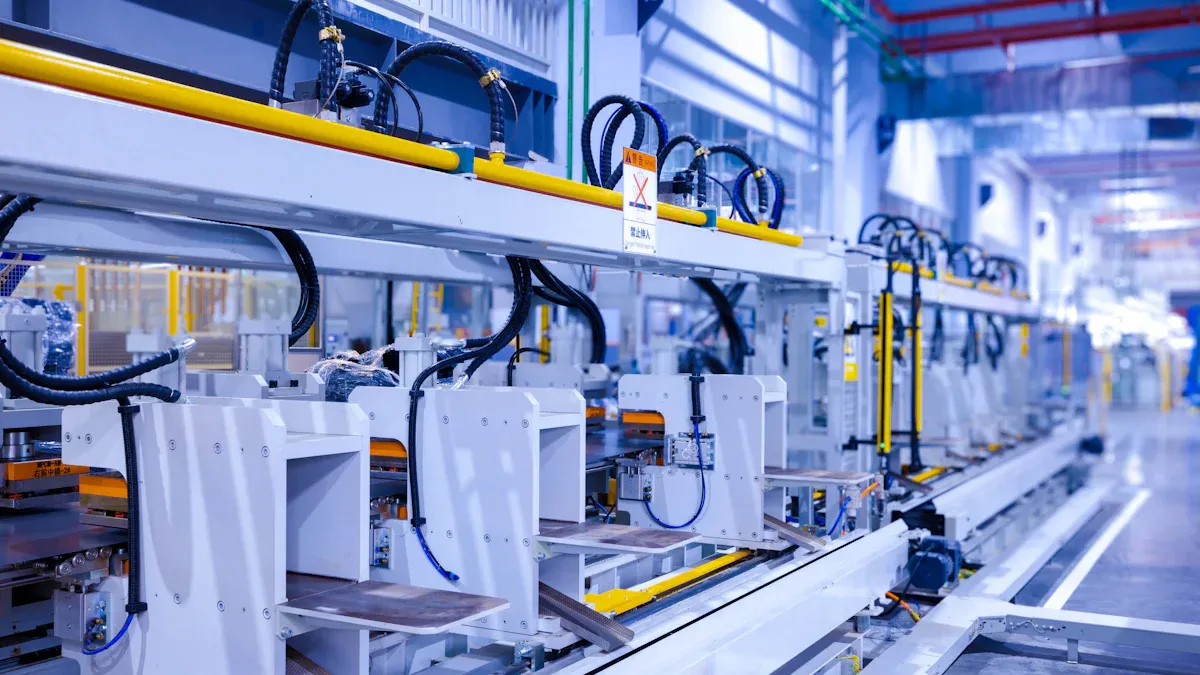Key Takeaways
Learning sheet metal assembly improves work speed. Good planning and proper tools give great results.
Picking the right materials is very important. Think about weight, strength, and use to get the best outcome.
A tidy workspace helps you work faster. Following clear steps and practicing can cut down mistakes a lot.
Preparation for Sheet Metal Assembly
Understanding Design and Specifications
I’ve learned that precision in design and specifications is the foundation of successful sheet metal assembly. Clear and detailed documentation eliminates confusion and reduces errors. For instance:
Listing part numbers alongside names ensures I can quickly identify components during assembly.
Including detailed specifications in drawings enhances clarity and speeds up the process.
Following established guidelines, like Design for Manufacturing and Assembly (DFMA), optimizes designs for better efficiency.
I’ve seen firsthand how precise CAD detailing can cut design iterations in half, helping me meet deadlines without compromising quality. When I focus on clear documentation, I avoid costly mistakes and achieve smoother workflows.
Selecting Materials for Sheet Metal Prototyping
Choosing the right material is critical for performance and durability. I always consider the application and properties of each material:
Aluminum is lightweight and corrosion-resistant, perfect for intricate shapes.
Stainless steel offers unmatched durability for demanding environments.
Mild steel is cost-effective and easy to form, ideal for less critical applications.
Copper excels in electrical conductivity but requires careful handling.
Titanium provides a high strength-to-weight ratio, making it ideal for aerospace and medical uses.
The material I select directly impacts the feasibility of sheet metal prototyping. For example, aluminum and stainless steel are my go-to choices for their formability and ease of cutting, ensuring high-quality results.
Organizing Workspace for Efficiency
An organized workspace transforms productivity. I standardize processes to maintain consistency and reduce errors. Nesting software helps me optimize material usage, minimizing waste. Regular quality control checkpoints catch issues early, saving time and resources.
I also invest in training to enhance my team’s skills and develop a maintenance schedule to prevent equipment breakdowns. By fostering a culture of continuous improvement, I empower my team to suggest better ways of working. A well-organized workspace doesn’t just save time—it ensures every project runs smoothly.
Tools and Techniques for Sheet Metal Assembly
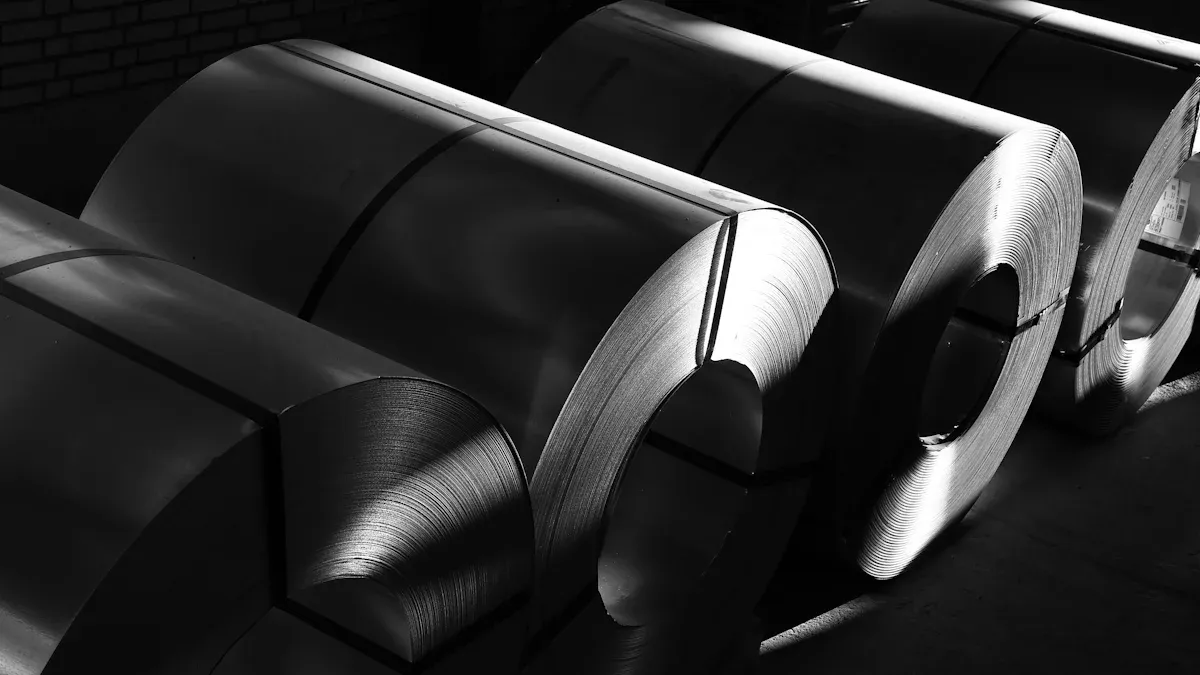
Essential Tools for Cutting, Bending, and Joining
The right tools make all the difference in sheet metal assembly. I’ve seen how advanced equipment can transform productivity and ensure precision. For cutting, tools like laser cutters and plasma cutters stand out. They deliver clean edges and minimize material waste. When it comes to bending, press brakes and robotic bending systems shine. They handle complex geometries with ease, thanks to algorithms that optimize tool selection and reduce setup times. For joining, welding tools such as MIG and TIG welders are indispensable. MIG welding offers speed and versatility, while TIG welding ensures high-quality results, especially for thin materials.
These tools not only enhance efficiency but also reduce errors. Research shows that manufacturers spend up to 50% of their time fixing mistakes, with 24% linked to manufacturability issues. By adopting advanced tools and techniques, I’ve been able to cut down on rework and focus on delivering high-quality results.
Techniques for Precise Alignment and Fitment
Precision is the cornerstone of successful sheet metal assembly. I always prioritize alignment techniques to ensure components fit perfectly. For instance, I arrange sheet metal parts around a core component to achieve proper alignment. This method guarantees that the intervals during welding remain controlled.
I’ve found that using these techniques not only improves fitment but also reduces the need for adjustments later. By focusing on alignment early in the process, I save time and ensure the final product meets the highest standards of precision.
Safety Practices During Assembly
Safety is non-negotiable in sheet metal assembly. I always emphasize the importance of protective gear, such as gloves, goggles, and steel-toed boots. These items shield against sharp edges, flying debris, and heavy materials. Beyond personal protection, I ensure that all tools are well-maintained and used correctly. For example, I regularly inspect welding equipment to prevent malfunctions.
I also implement clear safety protocols in the workspace. This includes proper ventilation to avoid inhaling fumes during welding and designated areas for cutting and bending operations. Training plays a crucial role here. I make sure my team understands the risks and knows how to handle emergencies.
A safe environment not only protects workers but also boosts productivity. When everyone feels secure, they can focus on the task at hand, leading to better results and fewer interruptions.
Step-by-Step Process for Sheet Metal Assembly
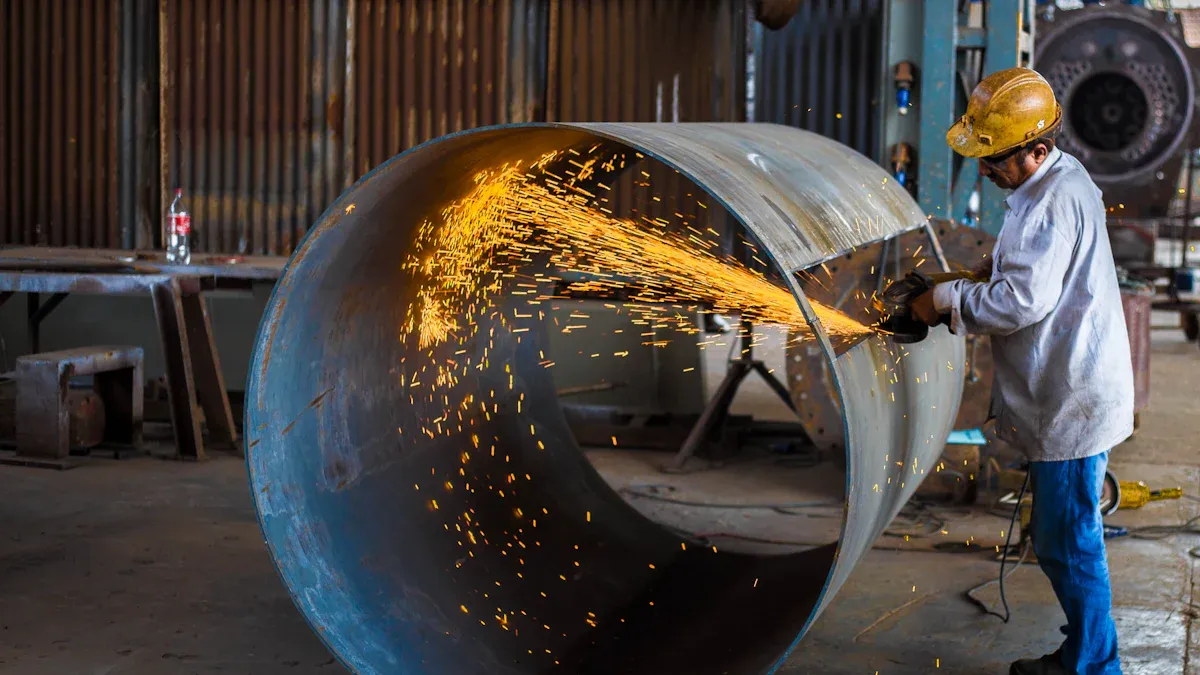
Cutting and Preparing Components
Cutting and preparing components is the first and most critical step in the sheet metal assembly process. I always ensure that every piece is cut with precision to avoid errors later in the assembly. Using advanced tools like laser cutters or plasma cutters, I achieve clean edges and maintain dimensional accuracy. This step not only improves production efficiency but also ensures the final product meets the highest quality standards.
To maintain consistency, I rely on detailed CAD designs. These designs eliminate discrepancies during fabrication and provide a clear roadmap for the process. For example:
Layer Management: Organizing design elements into layers enhances clarity.
Annotation and Dimensioning: Clear annotations prevent misunderstandings.
Bend Simulation: Simulating the bending process helps predict potential issues.
I also follow strict quality control protocols. Standard operating procedures, such as SOP-SMW-099 and SOP-SMW-246, guide my team in maintaining precision during cutting. These procedures ensure that every component is ready for the next stage without requiring rework.
Tip: Investing in nesting software can optimize material usage and reduce waste, saving both time and resources.
Positioning and Clamping for Stability
Proper positioning and clamping are essential for achieving stability during assembly. I always use the 'N-2-1' positioning scheme, which improves local stiffness and reduces deformation. This method ensures that every component aligns perfectly, minimizing internal stress and enhancing the mechanical properties of the final product.
I’ve found that using multiple end-locating effectors during clamping distributes stress evenly. This balanced approach not only improves geometric accuracy but also prevents warping. For instance, when assembling functional prototypes, precise positioning ensures that all parts fit seamlessly, resulting in a high-quality product.
Here’s how I optimize this process:
Use adjustable clamps to secure components without damaging them.
Regularly inspect clamping tools to maintain their effectiveness.
Implement real-time monitoring systems to detect and correct misalignments.
Note: A stable assembly process reduces errors and boosts production efficiency, saving valuable time in the long run.
Fastening and Joining Methods
Fastening and joining are the final steps in the sheet metal assembly process. I always choose methods that balance strength, cost, and ease of manufacture. For example, self-piercing riveting is ideal for joining dissimilar materials, especially in lightweight construction. This technique eliminates the need for preparatory processes, simplifying the assembly.
Here’s a comparison of common fastening methods:
For welding, I prefer TIG welding for its precision and ability to handle thin materials. However, I also explore innovative joining techniques, such as hybrid processes, to improve efficiency and quality. These advancements allow me to assemble complex structures with ease, even when working with challenging materials.
Case Study: The Beska team successfully completed a complex project by integrating sheet metal, CNC machined parts, and welded pipes. This achievement underscores the importance of following comprehensive assembly steps to ensure success.
By focusing on the right fastening and joining methods, I deliver durable and aesthetically pleasing products that meet client expectations.
Troubleshooting and Optimization
Addressing Common Assembly Issues
I’ve encountered recurring challenges in sheet metal assembly, but I’ve learned how to overcome them effectively. Excessive bending and weak joints often stem from poor design choices. Reinforcing sheet metal with ribs and selecting the right materials ensures strength and durability. Thoughtful placement of ribs prevents deformation, while choosing corrosion-resistant metals like stainless steel enhances longevity.
Sheet metal has a fascinating history, evolving through centuries of innovation. Ancient Egyptians used it for jewelry, while the Industrial Revolution introduced assembly lines and rolling mills. These advancements paved the way for modern techniques, like cold rolling, which transformed production methods. Today, the industry thrives on precision and efficiency, making troubleshooting a vital skill.
Tip: Collaborating with toolmakers during assembly can eliminate errors and ensure flawless results.
Tips for Improving Speed and Accuracy
Speed and accuracy are essential for success. I optimize parameters like mold clearance and pressure to reduce errors and improve consistency. For example, adjusting mold clearance ensures precise cuts, while maintaining uniform pressure enhances forming precision. Data analysis tools, such as regression techniques, help me identify relationships between parameters and outcomes, enabling smarter decisions.
Here’s how I boost efficiency:
Use high-accuracy equipment to minimize material inconsistencies.
Implement real-time monitoring systems to detect errors early.
Train the team to master advanced techniques for faster workflows.
These strategies have transformed my assembly process. By focusing on optimization, I’ve reduced waste and improved production speed without compromising quality.
Maintaining Tools and Equipment
Regular maintenance is the backbone of efficient assembly. I schedule proactive upkeep to prevent equipment failures and minimize downtime. For instance, inspecting welding tools weekly ensures consistent performance. Maintenance also extends the lifespan of machinery, saving costs in the long run.
Note: Investing in maintenance not only protects equipment but also boosts productivity, allowing me to deliver high-quality results consistently.
Efficient sheet metal assembly transforms productivity and quality. I’ve seen how techniques like brazing and riveting ensure structural integrity, while innovations like Tucker Plasma Joining promise even greater efficiency. By refining processes and maintaining tools, I consistently deliver durable results. Investing in these methods guarantees long-term success and keeps me ahead of industry trends.
FAQ
What is the best way to ensure precision in sheet metal assembly?
I always rely on CAD designs and advanced tools like laser cutters. These methods guarantee clean cuts and dimensional accuracy every time.
Tip: Simulate bending processes beforehand to avoid errors during assembly.
How can I reduce waste during sheet metal prototyping?
I use nesting software to optimize material usage. It minimizes scrap and saves costs while maintaining high-quality results.
Which fastening method is ideal for lightweight construction?
Self-piercing riveting works best for lightweight projects. It simplifies assembly and ensures strong joints without requiring preparatory processes.
Note: Always test the chosen method on sample materials before full-scale production.
